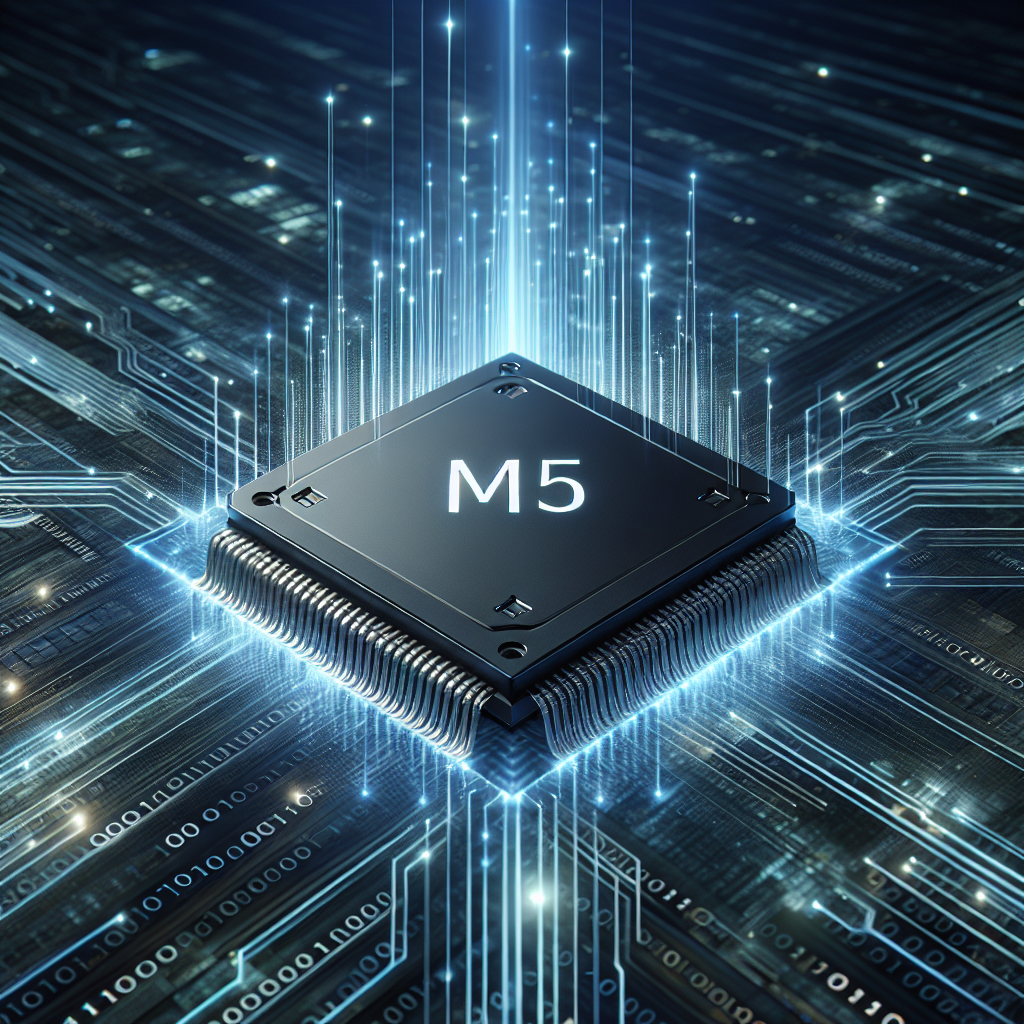M5 Chip Provides Superior Speed, Accelerated Rendering, and Advanced Intelligence
The technological realm is continuously transforming, and Apple once again leads the way with its newest innovation, the M5 chip. Unveiled on October 15, the M5 chip is poised to revolutionize speed, effectiveness, and AI functionality. Here’s a detailed examination of what distinguishes this chip as a transformative advancement.
The Progression of Apple Silicon
Following Apple’s transition from Intel to its proprietary Mac chips in 2020, every new version has delivered considerable progressions. The M1 chip signified Apple’s autonomy, the M2 honed their methodology, the M3 prioritized efficiency, and the M4 set the stage for the AI epoch. The M5, however, is specifically engineered for AI capabilities, highlighting Apple’s determination to spearhead advancements in artificial intelligence.
Key Attributes of the M5 Chip
Improved Graphics and Neural Engine
The M5 features a revamped 10-core GPU, with every core equipped with a dedicated Neural Accelerator. This setup reportedly provides over four times the peak AI capabilities of its predecessor, the M4. With Apple’s third-generation ray tracing technology and upgraded shader cores, graphic performance reaches up to 45% swifter than that of the M4 and 2.5 times quicker than the original M1. This enhancement is particularly advantageous for tasks ranging from gaming graphics to rendering in artistic applications.
Enhanced CPU Efficiency
The CPU architecture is composed of six efficiency cores and as many as four performance cores, bolstering multithreaded efficiency by 15% in comparison to the M4. This guarantees that multitasking and AI applications operate seamlessly with diminished latency, making it perfect for demanding workflows.
Memory and Energy Conservation
The M5 chip’s unified memory bandwidth has surged to 153GB/s, reflecting a 30% enhancement over the M4. This enables a greater number of AI models to function entirely on-device, decreasing dependency on cloud services and heightening speed. Additionally, the energy-efficient design of the M5 reduces overall power consumption across devices such as the MacBook Pro, iPad Pro, and Apple Vision Pro.
AI Proficiencies
Apple’s emphasis on AI is apparent in the M5’s features. The chip amplifies Apple Intelligence attributes, accommodating third-party AI processes and facilitating functions like image generation in Image Playground and transforming 2D images into spatial environments on the Apple Vision Pro. Developers can utilize Tensor APIs for direct interaction with Neural Accelerators, providing enhanced management of on-device model performance.
Availability and Preorders
The M5 chip powers the 14-inch MacBook Pro, iPad Pro, and Apple Vision Pro, all currently available for preorder. These devices, which promise substantial AI functionalities and energy efficiency, are set to ship starting October 22.
Conclusion
Apple’s M5 chip exemplifies the company’s unwavering dedication to innovation. Although initial assertions indicate impressive advancements, the ultimate evaluation will stem from independent assessments. For users involved in AI-intensive tasks, the M5 offers an attractive upgrade.
Q&A
What devices are equipped with the M5 chip?
The M5 chip powers the 14-inch MacBook Pro, iPad Pro, and Apple Vision Pro.
In what ways does the M5 chip enhance AI performance?
The M5 chip features a redesigned 10-core GPU with integrated Neural Accelerators, delivering four times the peak AI performance of the M4 and faster Neural Engine capabilities.
What graphics improvements are found in the M5 chip?
The M5 incorporates a third-generation ray tracing engine and improved shader cores, providing up to 45% faster graphics than the M4.
How has memory bandwidth advanced with the M5?
The M5 chip’s unified memory bandwidth has increased to 153GB/s, permitting more AI models to operate on-device.
What is the importance of the M5 chip’s energy efficiency?
The M5’s architecture reduces overall power consumption, improving the efficiency of devices such as the MacBook Pro, iPad Pro, and Apple Vision Pro.